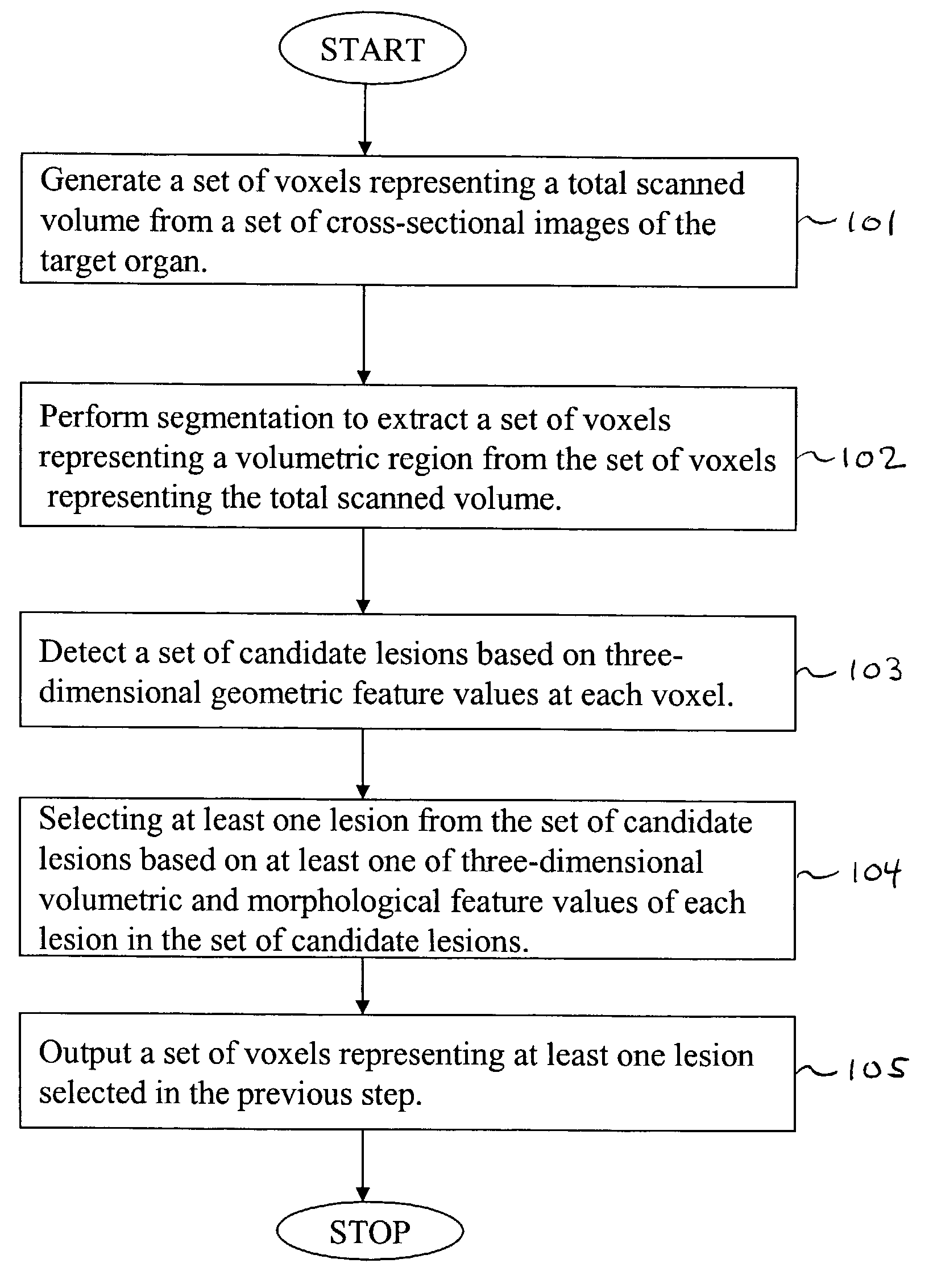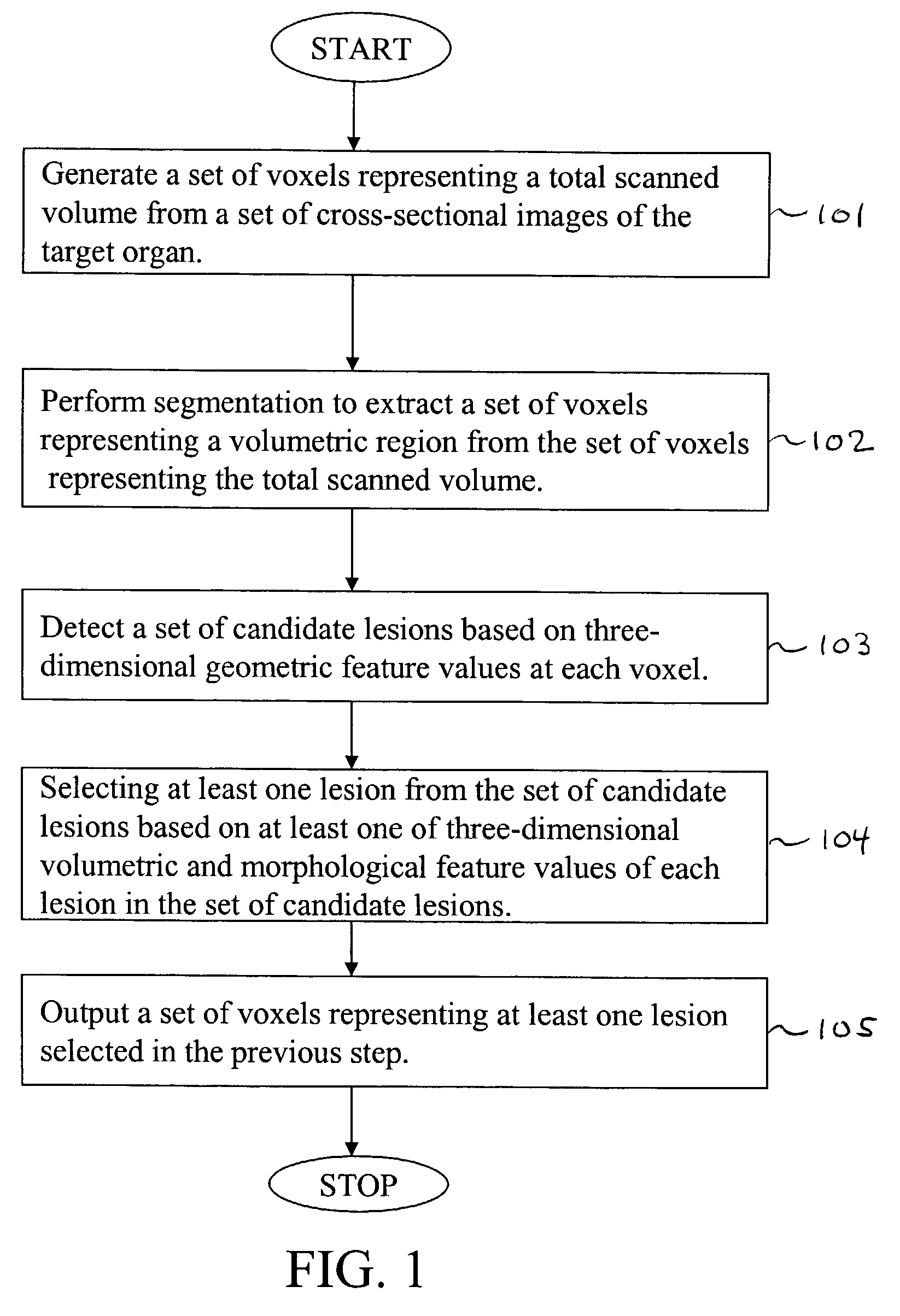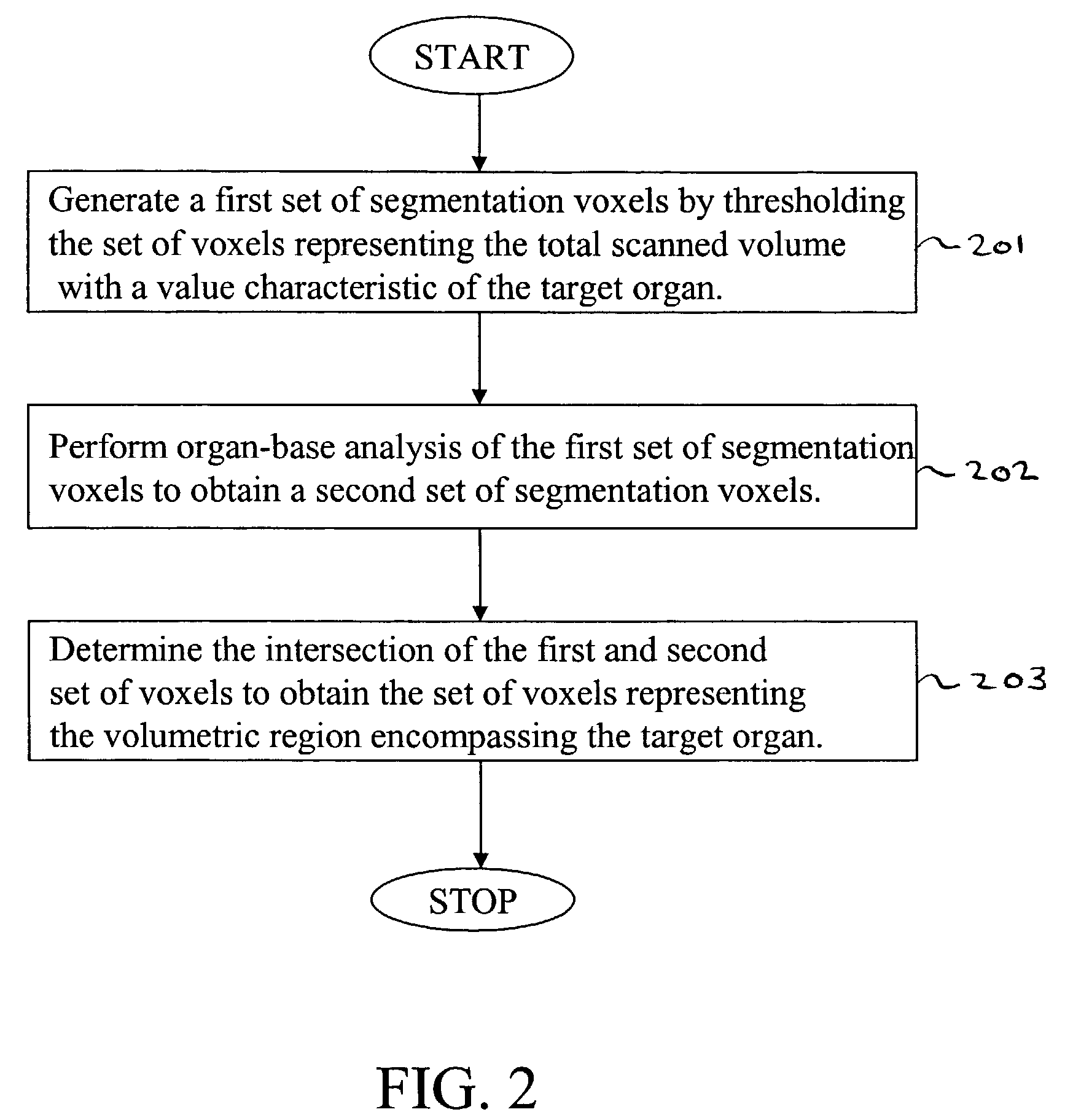Method for computer-aided detection of three-dimensional lesions
a three-dimensional, computer-aided technology, applied in the field of systems and methods for computer-aided detection of three-dimensionally extended organ lesions, can solve the problems of increasing the perceptual error, prone to perceptual errors, and time-consuming interrogation of an entire ctc examination, so as to maximize sensitivity, reduce false positives, and reduce false positives
- Summary
- Abstract
- Description
- Claims
- Application Information
AI Technical Summary
Benefits of technology
Problems solved by technology
Method used
Image
Examples
Embodiment Construction
[0117]Referring now to the drawings, wherein like reference numerals designate identical or corresponding parts throughout the several views, FIG. 1 is a flowchart illustrating steps in the computer-aided detection of three-dimensionally extended lesions within a volumetric region encompassing a target organ, according to the present invention.
[0118]First, in step 101, a set of voxels representing a total scanned volume is generated from a set of cross-sectional images of the target organ. Note that in this context, we mean a “set” to include at least one member.
[0119]Next, in step 102, segmentation is performed to extract a set of voxels representing the thick volumetric region from the set of voxels representing the total scanned volume.
[0120]In step 103, a set of candidate lesions is detected based on three-dimensionally derived geometric feature values of each voxel in the set of voxels representing the thick volumetric region.
[0121]In step 104, at least one three-dimensionally ...
PUM
 Login to View More
Login to View More Abstract
Description
Claims
Application Information
 Login to View More
Login to View More - R&D
- Intellectual Property
- Life Sciences
- Materials
- Tech Scout
- Unparalleled Data Quality
- Higher Quality Content
- 60% Fewer Hallucinations
Browse by: Latest US Patents, China's latest patents, Technical Efficacy Thesaurus, Application Domain, Technology Topic, Popular Technical Reports.
© 2025 PatSnap. All rights reserved.Legal|Privacy policy|Modern Slavery Act Transparency Statement|Sitemap|About US| Contact US: help@patsnap.com



